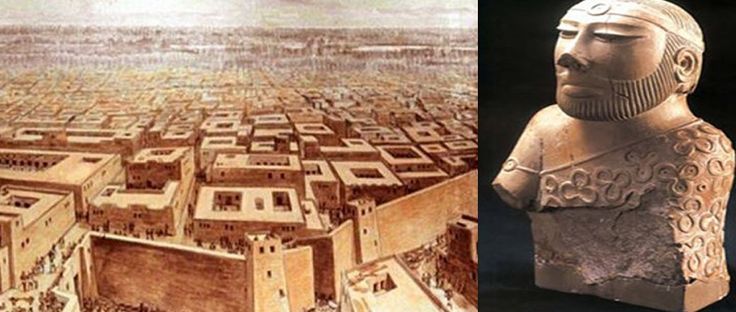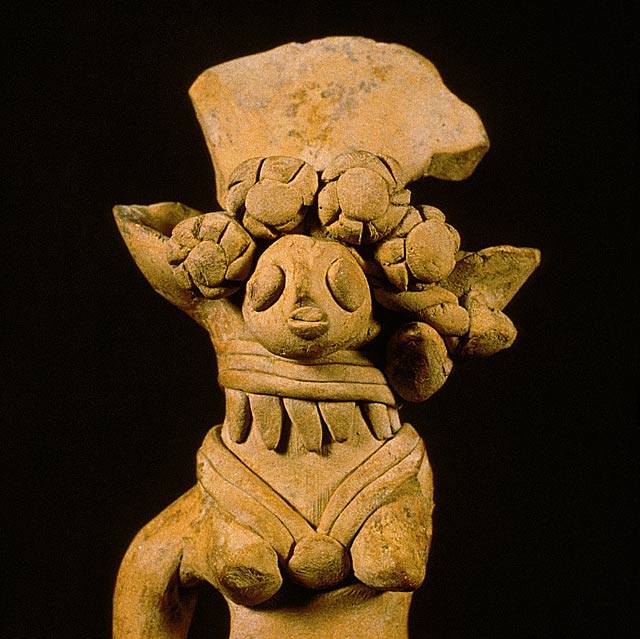
History Project On The Harappan Civilization For Class12th
INTRODUCTION
One of the world’s first civilizations, the Harappan Civilization (also called the Indus Valley Civilization) existed between 3300 and 1300 BCE. It was situated in the present-day nations of Pakistan and India’s Indus River Valley. Archaeologists initially learned about the civilisation in the 1920s and 1930s when they unearthed the ruins of the towns Mohenjo-Daro and Harappa, which were constructed utilising highly advanced engineering and urban planning methods. The Harappan Civilization is renowned for its sophisticated writing system, thoughtful urban design, and use of metal implements. It is thought that this civilisation was highly advanced, having a sophisticated social and economic structure.
SUBSISTENCE APPROACH
The Harappan Civilization’s subsistence strategy was based on an advanced agricultural system. Harappans developed sophisticated irrigation techniques to grow crops like wheat, barley, peas, and cotton in the Indus Valley’s lush soil. Additionally, they reared domesticated animals including pigs, sheep, goats, and cattle. Ploughs and other agricultural implements made of bronze were used to plough the soil by the Harappans. The Indus River and its tributaries offered a plentiful supply of fish, making fishing another significant source of food. The Harappans were expert metalworkers who produced hunting and defense-related implements and weapons from bronze and copper.
THE TECHNOLOGY USED IN AGRICULTURE
The Harappan Civilization was renowned for its sophisticated agricultural techniques, which aided in its development and success. The Harappans’ sophisticated irrigation system was one of the most noteworthy agricultural innovations. They created intricate irrigation systems with reservoirs, wells, and canals that enabled them to irrigate their crops even during dry spells. The Harappans were able to boost their agricultural productivity by using ploughs and other agricultural implements made of bronze to cultivate their crops. The Harappans also used crop rotation and soil conservation methods, which over time served to preserve the fertility of their land.
MOHENJO-DARO

One of the biggest cities of the Harappan Civilization, Mohenjo-Daro was situated in what is now Pakistan. It was one of the ancient cities that had been preserved the best when it was found in the 1920s and 1930s. The city had carefully planned streets and homes, and it was constructed on a grid basis. It featured an intricate drainage system that included sewers that were dug underground to transport garbage outside of the city. Mohenjo-daro’s dwellings were constructed from baked bricks and featured courtyards, wells, and bathrooms. The city also contained public structures including granaries, bathhouses, and a large hall that was utilised for gatherings and meetings of the general public. The inhabitants of Mohenjo-daro were expert craftspeople who made a variety of pottery, jewellery, and other handicrafts.
HOME IN A COURTYARD
One defining characteristic of the Harappan Civilization was the courtyard dwelling. It was a design of home that featured a courtyard in the centre, which served as a gathering area for guests, a kitchen, and other domestic tasks. Rooms for sleeping, storing things, and other uses were frequently built around the courtyard. The homes had flat roofs that served as additional living space and were constructed from baked bricks. The courtyard homes at Harappa were well-designed and frequently had their own wells, bathrooms, and drainage systems. Additionally, colourful frescoes and other creative accents were used to embellish the homes. The courtyard house was an effective and practical design that gave its occupants privacy, security, and comfort.
ALLEY
The Harappan cities had small, winding alleyways with erratic shapes and sizes. They were surrounded by homes, businesses, and other structures, and were intended to offer shade during the sweltering summers. The alleyways were also vital social gathering places where people could congregate, converse, and trade commodities and concepts. The alleyways were a crucial component of the city’s urban planning and were made to make it easier to move people and things around. A complex drainage system was also installed, preventing rainwater from building up in the alleys and causing flooding. The Harappan cities’ alleyways were evidence of the civilization’s sophisticated engineering and urban planning abilities.
DHOLAVIRA
One of the five biggest towns of the Harappan Civilization was Dholavira, which is now in Gujarat, India. It was found in 1967 and is renowned for its cutting-edge engineering and urban planning. A network of canals, dams, and reservoirs were used in Dholavira’s intricate water management system to collect and transport water across the city. In addition, the city possessed an advanced network of subterranean sewers for removing waste. The majority of the inhabitants of Dholavira lived in the lower town, which was fortified and used for defence. The well-designed fortress included a sizable central courtyard, as well as residential neighbourhoods and public buildings. The city was renowned for its handmade textiles, pottery, and jewellery.
MAIN ATTRIBUTES
The Harappan Civilization stood out from other prehistoric cultures thanks to a number of noteworthy characteristics. Its superior urban design and engineering, which comprised well-planned communities, complex water management systems, and cutting-edge agricultural technologies, was one of its key characteristics. The Harappans were also well-known for their writing system, which is currently being cracked but is thought to have been utilised for official functions. The civilisation had a sophisticated commerce network that covered the entire Indian subcontinent and beyond, as well as a complex social and economic structure with a hierarchy of professions. Additionally noteworthy were the aesthetic and cultural accomplishments of the Harappan Civilization, which included pottery, jewellery, and other handicrafts. Around 1300 BCE, the civilisation began to collapse and eventually vanished for causes that are still not entirely understood.
NOTICE BOARD
Sign boards were used by the Harappan Civilization and were discovered in several of its cities. The terracotta sign boards were written on with symbols and letters. Although the script on the sign boards has not yet been completely translated, it is thought to have been utilised for administrative and commercial purposes. The sign boards were used to disseminate information about commodities, services, and other significant issues and were put in conspicuous locations, such as close to markets and public buildings. The Harappan Civilization’s sophisticated trade and commerce system, as well as its capacity to generate and apply written language for practical reasons, are demonstrated through the usage of sign boards.
BURIALS
The intricate system of burial customs used by the Harappan Civilization varied according to social standing and local customs. Most burials were inhumations, in which the bodies were flexed and frequently accompanied by personal items like jewellery, ceramics, and weapons. A few burials included food and drink offerings as well as animal sacrifices. The Harappans also used cremation, in which the remains of the deceased were collected and deposited in a pot or urn after being burned on a pyre. The Harappans had a strong belief in the afterlife and took great care to make sure the deceased were properly buried or burnt with all the required items and offerings. The Harappan Civilization’s burial customs reveal important information about its social, cultural, and religious practises.
SEARCHING FOR LUXURY
The Harappan Civilization is thought to have had a love for luxury products, including precious metals, semi-precious stones, and exotic materials like ivory and gold, according to archaeological data. The aristocracy utilised these expensive items as status symbols, frequently importing them from far-off places like Central Asia and the Persian Gulf. The Harappans were renowned for their skill in the arts of workmanship and created a variety of expensive goods, including as jewellery, ceramics, and textiles, which were highly esteemed in antiquity. The Harappan commerce network was heavily reliant on the pursuit of luxury items, which fueled the civilization’s development and wealth.
FACT AND THE CRAFT INDUSTRY
Craft production was a robust business in the Harappan Civilization, with skilled artisans creating a variety of products, including pottery, textiles, jewellery, and metals. Craftsmen frequently worked as a member of a guild system, which controlled production and ensured quality control, and this system played a significant role in the economy of the civilization. The Harappans produced crafts using a variety of materials and methods, including wheel-thrown pottery, stamping and incising processes, and bead-making, according to archaeological data. The highly developed Harappan craft sector created objects that were traded across the Indian subcontinent and beyond. The Harappan Civilization’s ability to construct and sustain a sophisticated economic structure, as well as its aesthetic and technological prowess, are demonstrated by the fact that it had a thriving craft sector.
METHODS FOR OBTAINING MATERIALS
A variety of tactics were used by the Harappan Civilization to obtain the resources required for its craft industry and other commercial endeavours. Long-distance trade, regional production, and resource management were some of these tactics. The Harappans were renowned for their capacity to procure and trade a wide range of goods from remote areas like Central Asia and the Persian Gulf, including rare metals, semi-precious stones, and exotic woods. They produced things for domestic use and trade by using local resources including clay, wood, and animal hides. Along with resource management, the Harappans employed crop rotation and terracing to ensure sustainable agricultural output. The Harappan Civilization was able to continue economic growth and its status as a significant economic force in the ancient world thanks to the combination of these techniques.
SEALING MECHANISMS
The Harappan Civilization relied heavily on seals and sealings for its economic and administrative operations. The Harappans imprinted identifying marks on their goods and papers using seals composed of the soft stone steatite. These seals frequently had beautiful decorations with pictures of people and animals and were written in the Harappan script. The seals were used to certify official documents like contracts and receipts as well as to mark products for commerce. Sealings, which were impressions left by the seals, were used to seal goods and containers also to offer proof of theft or tampering. The Harappan Civilization’s use of seals and sealings offers important insights into its governmental and economic structures as well as its artistic and technological accomplishments.
A MYSTERIOUS SCRIPT
The cryptic script of the Harappan Civilization is renowned for having not yet been fully decoded. The writing is recognisable by its characteristic symbols and motifs and can be seen on a range of items, including seals, pottery, and metalwork. The Harappan script is still largely untranslated after decades of research, and its meaning and purpose continue to be hotly contested. Some academics think the script served administrative functions, while others think it might have served a religious or symbolic purpose. The investigation of the Harappan script is an ongoing field of study, and fresh revelations and insights keep shedding light on this interesting facet of the culture.
A HISTORIC AUTHORITY
The Harappan Civilization is regarded as one of the oldest and most significant in antiquity. Later civilizations, such as the Vedic, Mauryan, and Gupta empires, may still trace its influence in their art, architecture, and cultural practises. The Harappan Civilization also possessed a strong commerce network that spanned the whole Indian subcontinent and beyond, making it a significant economic force. It continues to influence contemporary towns and communities with its agricultural breakthroughs and sophisticated urban planning. In addition to the tangible artefacts it left behind, the Harappan Civilization has had a lasting influence on human history and culture.
KINGS AND PALACES

It is possible that the Harappan Civilization was essentially egalitarian because there is little evidence of palaces or kings there. The Harappans appear to have had a decentralised system of governance, with authority being divided among many communities and areas, in contrast to many other ancient civilizations, which were dominated by strong monarchs and nobles. The design of Harappan cities, which were split into various neighbourhoods and lacked a central palace or fortress, reflects this. It is notable that there is no proof of palaces or kings in the Harappan Civilization since it shows a distinct political and social structure that was different from other modern societies. However, there is still disagreement among academics over the precise makeup of Harappan political organisation.
FEMALE STATUE

Among the most prevalent artefacts from the Harappan Civilization are figurines of women. These figurines frequently have jewellery and headdresses on them and show women in a variety of positions and outfits. Although their particular function is uncertain, it is thought that these figures served a religious or ritualistic purpose. The figurines may have symbolised goddesses or fertility deities, according to some scholars, while others contend that they may have served as talismans for protection or as decorations for home shrines. These figures were found all over the Harappan world, which implies that they had a significant cultural impact on the people who lived there.
THE COLLAPSE OF CIVILIZATION

The Harappan Civilization’s demise is a much-debated and conjectured subject among academics. Numerous theories have been put up to explain the civilization’s decline and final collapse, yet there is no conclusive explanation. According to a widely accepted view, environmental changes including climate change and changes in monsoon patterns may have caused ecological stress and resource depletion, which in turn caused social and political upheaval. Other theories contend that outside forces like invasion or trade disruption may have contributed to the collapse of the civilization. Some researchers have hypothesised that battle or conflict may have had a role in the damage and violence found in some Harappan sites. The exact reason(s) for the Harappan Civilization’s demise are still a mystery, in spite of the various ideas, and its legacy continues to fascinate and motivate academics and fans worldwide.
CUNNINGHAM’S PERPLEXITY
In the late 19th century, Alexander Cunningham, a British archaeologist, carried out excavations at numerous Harappan sites. Cunningham misidentified and misinterpreted some of the artefacts he discovered, which led to uncertainty and dispute despite the fact that his study was crucial in proving the existence and significance of the Harappan Civilization. For instance, Cunningham first thought that some of the seals from Harappa were Buddhist in nature because of their resemblance to later Buddhist seals discovered in India. The incorrect identification caused uncertainty and slowed down the investigation of the artefacts and culture of the Harappan Civilization. Despite these defeats, successive investigations and excavations have improved our knowledge of the Harappan Civilization, and the contributions of archaeologists like Cunningham continue to play a significant role in the history of the discipline.
OLD NEW CIVILIZATION
The Harappan Civilization, which dates back to roughly 2600 BCE, is one of the world’s earliest urban civilizations and is frequently referred to as the “newest old civilization.” Despite its age, the Harappan Civilization is a relatively recent addition to the list of ancient civilizations because archaeologists only discovered and recognised it in the 1920s. The finding of the civilisation was a significant advance in archaeology since it shed light on the customs and behaviours of one of the oldest advanced civilizations. The complex urban planning, cutting-edge agricultural techniques, and distinctive culture of the Harappan Civilization have persisted in capturing and enthralling experts and fans alike, solidifying its place as a crucial element of the human story.
DIFFICULTIES IN RECONSTRUCTING THE PAST
As with any ancient civilisation, it is difficult and complex to piece together the Harappan civilisation’s history and culture. Researchers must rely on other forms of information, such as archaeological artefacts and features, to reconstruct the culture and its practises because there are no written documents or inscriptions from the civilization. Additionally, it might be challenging to get a thorough picture of the civilization due to the scattered and frequently inaccessible settings of Harappan sites, as well as the substantial damage and looting of numerous sites. Last but not least, due to the civilization’s extreme age and the lack of any living direct descendants, many facets of Harappan life and culture are still a mystery and the topic of continuous discussion. Despite these difficulties, continuous research and excavation projects are advancing our understanding of the Harappan Civilization by bridging knowledge gaps and shedding light on this fascinating and puzzling culture.
ISSUES WITH INTERPRETATION
Researchers have a particular set of difficulties when attempting to interpret the artefacts and characteristics of the Harappan Civilization. Researchers must rely on other types of evidence, such as pottery, seals, and architecture, to interpret the culture and its practises because there are no written records or inscriptions from the civilization. This may result in many interpretations of the same object or feature, some of which may be at odds with one another. For instance, there is ongoing discussion on the usage and significance of the Harappan seals. Some academics contend that they were employed for administrative purposes, while others contend that they had a religious or symbolic meaning. Additionally, since there are no living direct descendants of the civilisation, there is no way for researchers to interpret their findings using cultural practises or traditions of contemporary cultures. Additionally confounding interpretation efforts is the fact that due to the civilization’s lengthy history—more than a thousand years—various regions and time periods may have had diverse customs and cultures. Despite these obstacles, continued study and expert cooperation are assisting in improving and broadening our understanding of the Harappan Civilization and its aftereffects.
CONCLUSION
In summary, the Harappan Civilization was a fascinating and intricate culture that has fascinated academics and enthusiasts for almost a century. The Harappan Civilization paints a rich and complex picture of one of the oldest complex cultures in human history, from its advanced urban planning and sophisticated agricultural methods to its mysterious script and elaborate craft economy. However, due to the difficulties in reconstructing the past and understanding the data, there are still many unanswered questions regarding civilisation. The gaps in our understanding are being filled up by ongoing research and expert collaboration, which is leading to a better understanding of this amazing society. We learn more about the complexity and diversity of human cultures throughout history as we look further into and solve the mysteries of the Harappan Civilization.
CERTIFICATE
This is to certify that I, [Your Name], a student of Class 12th, have completed the history project on “The Harappan Civilization” under the guidance of my esteemed teacher [Teacher’s Name]. This project was undertaken as a part of my academic curriculum for the current academic year.
I embarked on this journey of discovery to explore and understand the enigmatic world of the Harappan Civilization, also known as the Indus Valley Civilization. Throughout this project, I delved into various aspects of this ancient civilization, from its origin and geography to its culture, society, and economy. The project enabled me to comprehend the subsistence approach of the Harappan people, their advanced agricultural techniques, and the technology employed in agriculture.
Furthermore, I explored some of the key cities of the Harappan Civilization, such as Mohenjo-Daro and Dholavira, to gain insights into their urban planning, architecture, and unique features like courtyard dwellings and intricate alleyways.
While studying this ancient civilization, I encountered intriguing mysteries, including the undeciphered script and the factors that may have contributed to the decline and eventual disappearance of this remarkable society.
Completing this project was both challenging and rewarding, as it allowed me to cultivate research skills, critical thinking, and a deeper appreciation for the complexities of history. I extend my heartfelt gratitude to my teacher for guiding me throughout this project and encouraging me to explore various aspects of the Harappan Civilization.
I hereby submit this project for evaluation, hoping that it reflects my sincere efforts and passion for unraveling the secrets of the Harappan Civilization.
[Your Signature]Date: [Date of Submission]
In order to download the PDF, You must follow on Youtube. Once done, Click on Submit
Follow On YoutubeSubscribed? Click on Confirm
Download History Project On The Harappan Civilization For Class12th PDF






